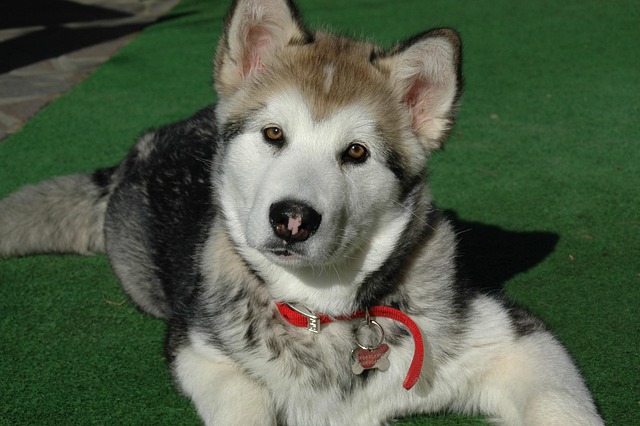
What is the healthiest food to feed your puppy
The quest for the healthiest puppy food can feel overwhelming for a new owner, staring at an entire wall of options at the pet store.
When the scorching sun of summer scorches the earth without reservation, not only will we be attacked by the heat, but the lively fur children at home will also face severe tests. Canine heatstroke and heat exhaustion are the two "invisible killers" that threaten the health of dogs. As pet owners, being able to clearly distinguish these two diseases is crucial to protecting the life and health of dogs. This not only requires scientific knowledge reserves, but also contains our deep concern and love for dogs.
From a medical point of view, canine heatstroke and heat exhaustion are essentially caused by the dog's long-term exposure to high temperatures, which makes it difficult for the body to dissipate heat, resulting in an imbalance in body temperature regulation. However, they have obvious differences in pathogenesis, symptoms and severity.
Heat exhaustion is the result of excessive consumption of water and electrolytes by the dog's body in a high temperature environment in order to maintain a normal body temperature. Simply put, the "energy reserve" in the dog's body is in short supply under the continuous consumption of high temperature. Dogs in a state of heat exhaustion usually show apathy, loss of appetite, and their originally lively eyes become dull. They will pant frequently, trying to dissipate heat by speeding up their breathing, and their tongues will turn bright red due to excessive panting. In addition, the dog's heartbeat will be significantly faster, and you can feel a rapid and strong pulsation when you touch it. If you observe carefully, you can also find that the dog's paw pads become wet, which is a sign that the body is trying to dissipate heat through sweating. Although heat exhaustion has milder symptoms than heat stroke, if it is not relieved in time, the dog's physical condition will deteriorate rapidly and develop into heat stroke.
 Heat stroke is a more serious condition for dogs. When the dog's body temperature continues to rise and exceeds 40℃, the organs and systems of the body will be seriously damaged. Dogs with heat stroke will vomit violently, and the vomit may be yellow or white foam. Their breathing becomes rapid and difficult, and even respiratory rhythm disorders may occur. Some dogs will fall into a coma, react slowly to external stimuli, and their limbs will twitch and become uncontrolled like electric shock. More seriously, heat stroke may cause coagulation disorders in dogs, causing bleeding in the gums, nose and other parts. If heat stroke is not treated in time, the dog's life will be in danger.
Heat stroke is a more serious condition for dogs. When the dog's body temperature continues to rise and exceeds 40℃, the organs and systems of the body will be seriously damaged. Dogs with heat stroke will vomit violently, and the vomit may be yellow or white foam. Their breathing becomes rapid and difficult, and even respiratory rhythm disorders may occur. Some dogs will fall into a coma, react slowly to external stimuli, and their limbs will twitch and become uncontrolled like electric shock. More seriously, heat stroke may cause coagulation disorders in dogs, causing bleeding in the gums, nose and other parts. If heat stroke is not treated in time, the dog's life will be in danger.
As the dog's closest companion, how can we find the dog's abnormality in daily life and take timely measures? In hot weather, we should always pay attention to the dog's behavioral changes. If the dog is originally lively and jumping, but suddenly becomes quiet, lies on the ground and is unwilling to move, or loses interest in the toys and food it usually likes, it should be alert. When the dog has symptoms such as frequent panting and drooling, it is best to measure its body temperature with a thermometer. Under normal circumstances, the dog's body temperature is between 37.5℃ - 38.5℃. If the body temperature exceeds 39℃, it is necessary to take cooling measures.
Once the dog is found to have symptoms of heat exhaustion or heatstroke, take immediate action. For dogs with heat exhaustion, first move them to a cool and ventilated place to avoid direct sunlight. Then, you can wipe the dog's paw pads, ears and other parts with a wet towel to remove heat through the evaporation of water. At the same time, provide the dog with an appropriate amount of clean water and let it slowly replenish water. But be careful not to force the dog to drink water to avoid choking and coughing.
If the dog has already suffered from heatstroke, the situation is even more urgent. The dog should be quickly immersed in cool water, and the water temperature should be kept at around 25℃ - 30℃ to help the dog quickly lower its body temperature. While cooling down, contact the pet hospital immediately for professional medical assistance. During the medical treatment, continue to observe the dog's breathing and heartbeat to ensure that its vital signs are stable.
Prevention is always better than cure. In the hot summer, try to avoid taking the dog out at noon, and choose to walk the dog in the early morning or evening when the temperature is lower. Provide the dog with plenty of drinking water and make sure there is water in the water bowl at any time. In addition, you can prepare some cooling supplies for the dog, such as ice pads, cooling vests, etc., to help them stay cool.
Dogs are warm companions in our lives, and their health is at our heart. Understanding the relevant knowledge of dog heatstroke and heat exhaustion is an important step for us to protect the health of dogs.

The quest for the healthiest puppy food can feel overwhelming for a new owner, staring at an entire wall of options at the pet store.

That tiny face looking up at you from a bowl that seems too big for them brings a very specific question: what is the absolute best food for my small-breed dog?

When a puppy starts showing signs like fever, runny eyes, or lethargy, panic often sets in for dog owners—especially when distemper is mentioned.

If you’ve ever pulled a bag of dog treats from the pantry only to have your pup spin in circles and paw at your feet, you might wonder

Pet owners often miss subtle changes in their dog’s behavior that signal worms, since many signs can seem like regular doggy habits at first.

You’re standing in the pet store aisle, holding a bag of crunchy peanut butter biscuits in one hand and freeze-dried salmon strips in the other